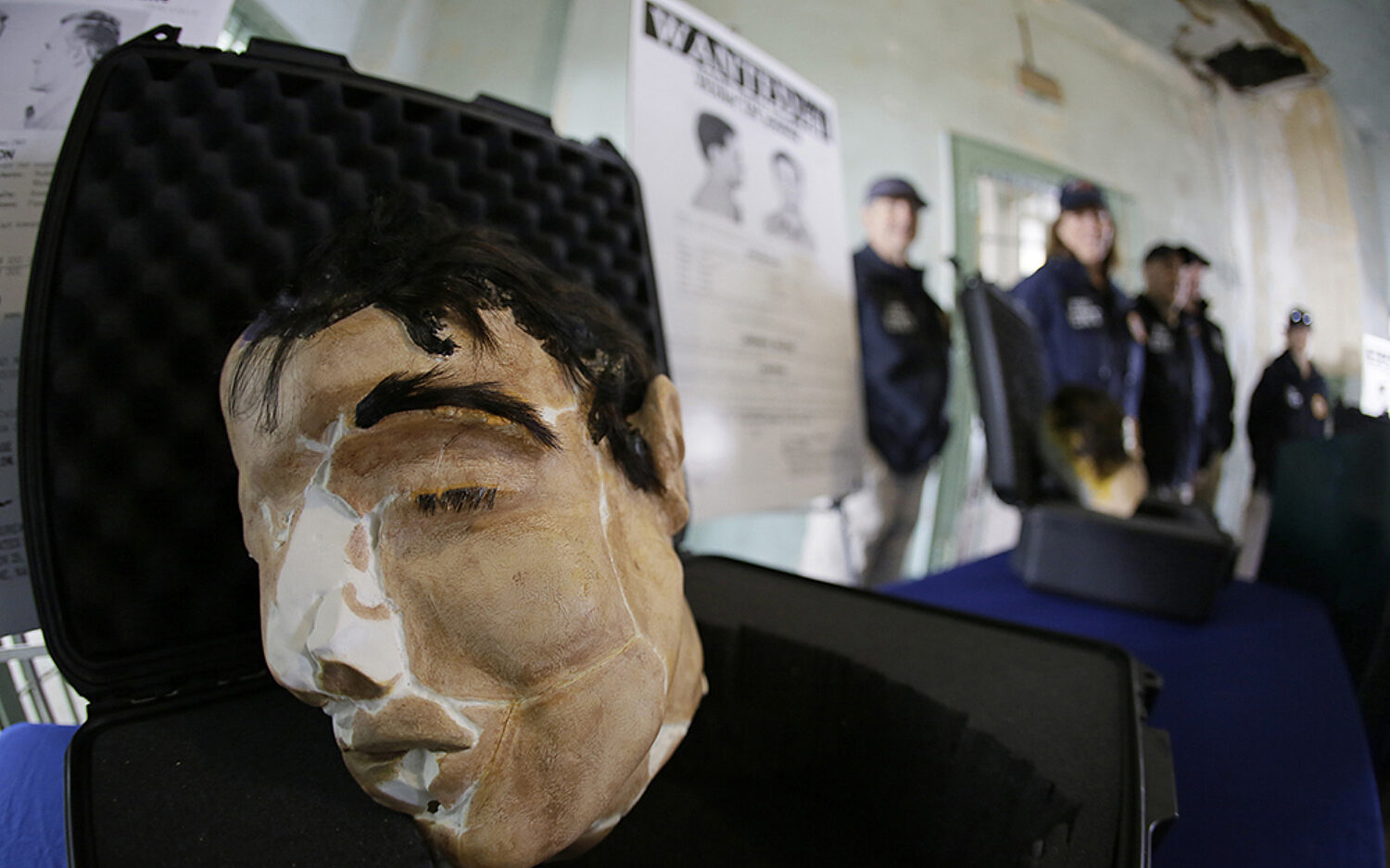Over half a century after their infamous escape from Alcatraz, three former inmates are still missing. Authorities have no idea what became of the men. But some newly made 3-D reproductions from the jailbreak reveal that law enforcement is still on the case.
Alcatraz Island sits in San Francisco Bay, just over a mile from the California shore. The penitentiary, nicknamed “The Rock,” housed prisoners from 1934-1963. Alcatraz once held some of America’s most wanted: Al Capone, “Machine Gun” Kelly, and “The Birdman,” as well as Frank Morris, John Anglin, and Clarence Anglin—three men who escaped and were never found.
Four Men and a Plan
Morris, the Anglin brothers, and another inmate, Allen Clayton West, planned their escape for over a year. The men built life preservers and a raft from more than 50 pilfered raincoats. They used cardboard, concrete chips, toilet paper, and human hair from the prison barber shop to construct creepy, life-like heads to put in their beds. The decoys fooled the guards and gave inmates a “head start” for their June 1962 getaway. Three of them crawled through air vents in their cells to the prison roof. West had trouble getting out. The others left him behind.
The trio hasn’t been heard from since. Did they drown? Did they float to freedom? Authorities don’t know. But even if the escapees made it to shore, they were never truly free. Proverbs 5:22 says, “The iniquities of the wicked ensnare him; he is held fast in the cords of his sin.” No doubt the men spent whatever time they had (if any!) looking over their shoulders. Only those Jesus sets free from sin, can be “free indeed.” (John 8:36)
The FBI investigated the Alcatraz prison break until 1979. Then it turned it over to the U.S. Marshals Service.
Decoys Remade
The Golden Gate National Recreation Area manages Alcatraz Island National Park today. The agency wanted to preserve the fragile original heads and display realistic copies at the former prison. This fall, the FBI made 3-D-printed replicas. Members of the FBI team painted the new decoys and even donated their own hair for the recreations.
“We understand the original items can’t be out here,” says FBI special agent John F. Bennett. But “those items are also part of the rich and historic fabric and the landmark of [San Francisco].”
Open Investigation
The Marshals continue to investigate leads about the escapees. They’ll keep investigating until the escapees are either proven deceased or until they turn 99. If they’re still alive, the men would today be 92 (Morris), 88 (John Anglin), and 87 (Clarence Anglin).
“Some may believe that we’re chasing shadows, but our efforts are meant not just to perform due diligence, but to be a warning to other fugitives,” O’Keefe says. “U.S. Marshals don’t give up.”

























